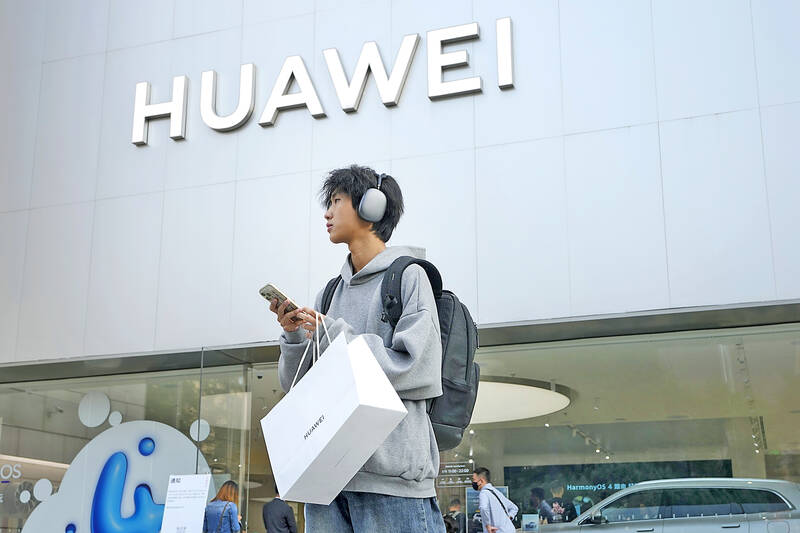‘FUTILE EFFORT’: Former TSMC vice president Lin Burn-jeng said Beijing would seek to reach the 5-nanometer technology milestone and experiment with new materials
The US might not be able to stop Chinese firms, including Semiconductor Manufacturing International Corp (SMIC, 中芯) and Huawei Technologies Co (華為), from making progress in chip technology, one of the semiconductor industry’s leading figures said this week.
SMIC and Huawei, which stunned Washington by unveiling a made-in-China phone processor, can use existing older machines to make even more sophisticated silicon, former Taiwan Semiconductor Manufacturing Co (TSMC, 台積電) vice president Lin Burn-jeng (林本堅) said.
SMIC should be able to advance to 5-nanometer technology with ASML Holding NV machines that it already operates, said Lin, who at TSMC championed the lithography technology that transformed chipmaking.
Huawei electrified the chip industry when it unveiled a 7-nanometer processor made by SMIC in the Mate 60 Pro, triggering celebrations in China and accusations in the US that a campaign to contain the country’s tech ascent had failed.
Yangtze Memory Technologies Co (長江存儲) is also producing some of the most advanced memory chips in the industry.
The administration of US President Joe Biden this month tightened curbs to close loopholes through which China might be accessing advanced US equipment, marking a new phase in a struggle to influence technologies crucial to the economic and political balance.
Yet that might not stop China’s technological ascent, said Lin, who is highly regarded in the industry for being the first person to propose immersion lithography, the technology that ASML’s core products rely on.
SMIC used ASML’s immersion lithography machines to make the 7-nanometer chip for Huawei, Lin said.
Beyond trying to reach the 5-nanometer milestone, it is likely that China would experiment with new materials or advanced chip packaging to make more powerful semiconductors, he said.
“It is just not possible for the US to completely prevent China from improving its chip technology,” Lin said in an interview at National Tsing Hua University in Hsinchu City, where he serves as dean of the semiconductor research college.
That echoed comments from Arm Holdings PLC chief executive officer Rene Haas earlier this month.
“What the US really should do is to focus on maintaining its chip design leadership instead of trying to limit China’s progress, which is futile, as China is adopting a whole-nation strategy to boost its chip industry, and hurting the global economy,” Lin said.
The US might have inadvertently granted Shanghai-based SMIC a golden opportunity, he added.
In 2020, Washington effectively banned TSMC — supplier of the world’s most advanced silicon to Apple Inc and Nvidia Corp — from doing business with Huawei.
That is when SMIC stepped up to inherit the massive orders that helped it to improve its manufacturing technique, Lin said.
A debate is now raging in the US and beyond about whether Washington and its allies should step up their Chinese containment campaign.
US Secretary of Commerce Gina Raimondo has said Washington does not have evidence that China can make advanced chips “at scale.”
US Under-Secretary of Commerce for Industry and Security Alan Estevez said it is “absolutely” a concern for Washington that China could use 7-nanometer technology — or better — in military applications.
- Adenman
-

 1
1



Recommended Comments
There are no comments to display.
Join the conversation
You can post now and register later. If you have an account, sign in now to post with your account.
Note: Your post will require moderator approval before it will be visible.